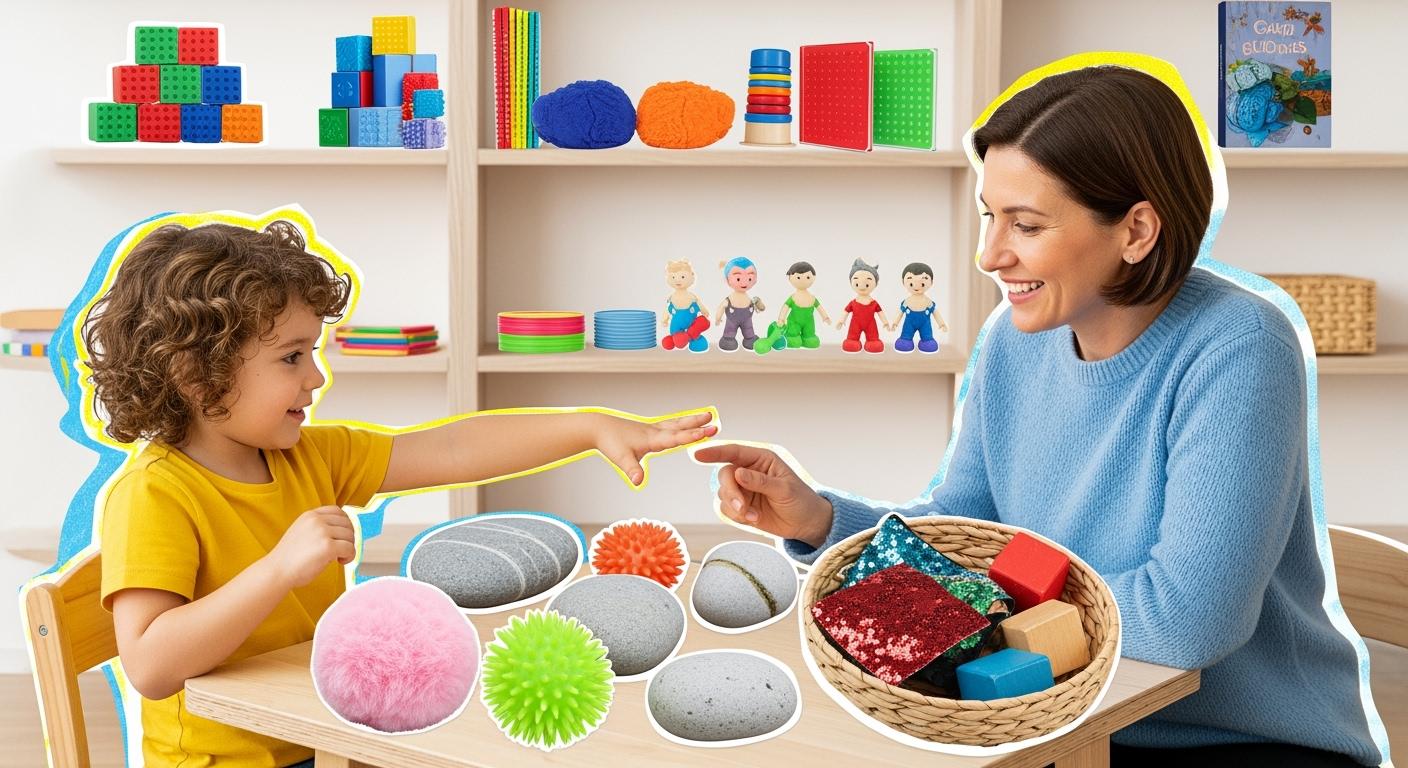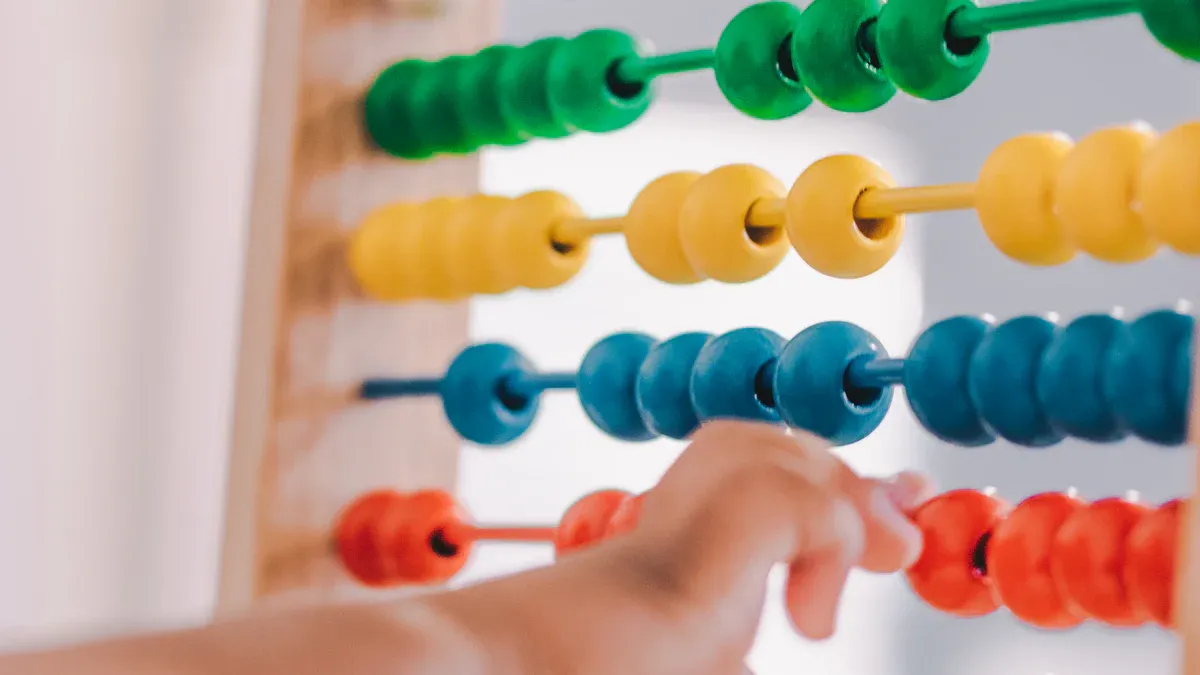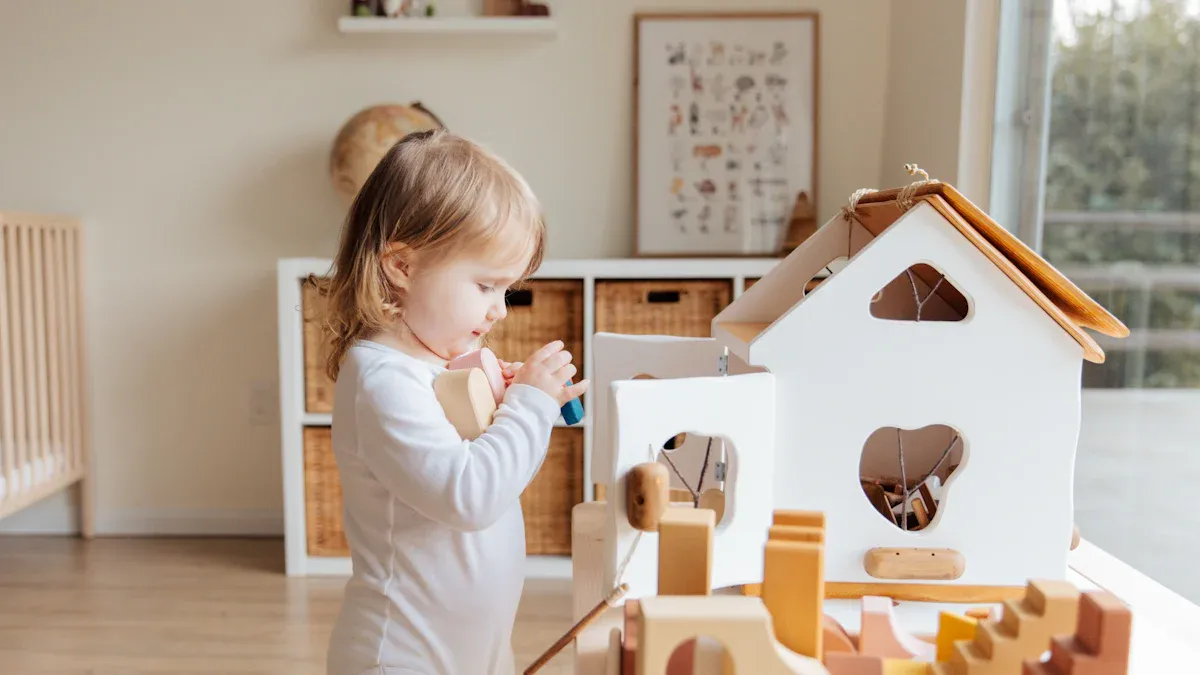Effective Therapies for Sensory Activation Issues in Children

You may feel stressed when your child has sensory activation problems. There are many good therapies that help kids handle these problems. Getting help early often brings better results. A professional can check your child and suggest the best therapy. Each sensory therapy has its own special benefits. You can find simple steps that really help.
Key Takeaways
Getting help early is very important. Early help for sensory activation issues can help your child do better.
Occupational therapy gives special activities. Therapists look at what your child needs. They suggest activities to help with things like dressing and eating.
Sensory integration therapy uses play. Fun games help your child’s brain handle sensory information. This can help your child focus and behave better.
Home activities can help with sensory growth. Easy things like playing with bumpy toys or making a quiet space can help your child learn new skills.
Working with professionals is very important. Therapists can give your child the best help and advice for their sensory needs.
Sensory Activation in Children

What Is Sensory Activation?
Some kids react a lot to sounds, lights, or touch. Sensory activation is how the brain reacts to things around us. The brain gets messages from sight, sound, smell, taste, and touch. Sometimes, these messages feel too strong or confusing. This can make normal things feel too much or not enough.
Sensory activation is not the same for every child. Some kids want more movement or touch. Others stay away from certain textures or noises. Your child might cover their ears when it is loud. They may not want to wear some clothes. These actions show how their sensory system works. Sensory integration helps the brain sort out these messages. If the brain has trouble, sensory-based interventions and therapy can help.
Impact on Daily Life
Sensory activation issues can change your child’s daily life. You may notice problems with dressing, eating, or playing. For example, a child might not like playground equipment. It may feel scary or strange. Another child may always want to move and cannot sit still in class.
Tip: Look for patterns in your child’s actions. This can help you and your therapist pick the best help.
Sensory activation can also make learning and making friends hard. Your child may not focus well in loud places. They may not want to join group games. These problems can slow growth and hurt confidence. Sensory integration therapy and other sensory-based interventions can help your child. With the right help, kids can learn new skills and enjoy life more.
Interventions for Sensory Activation

Occupational Therapy
Occupational therapy gives you ways to help your child. Therapists watch how your child does daily things. They pick activities that fit your child’s needs. These can make dressing, eating, and playing easier. Your child may feel more sure and do things alone. Occupational therapy uses sensory-based interventions like brushing or swinging. These help your child handle information from their surroundings. This helps your child grow and learn new skills.
Sensory Integration Therapy
Sensory integration therapy helps your child’s brain sort out senses. The therapy uses fun activities with sight, sound, taste, smell, and touch. Your child might swing, climb, or play with bumpy toys. These activities wake up the vestibular, proprioceptive, and tactile senses. Sensory integration therapy helps kids with delays, autism, cerebral palsy, and psychomotor disorders. The fun games keep your child interested in therapy.
Note: Sensory integration therapy helps your child’s brain work better with senses. This can help your child focus and behave better.
Studies show sensory integration therapy helps kids with learning problems. For example, Leong et al. (2015) found this therapy helps sensory processing. Therapists use Ayres Sensory Integration® in clinics. At home or school, kids use weighted vests or bounce on balls. These help with self-control and paying attention.
Study | Findings |
|---|---|
Leong et al. (2015) | Meta-analysis shows sensory integration therapy helps kids with learning and developmental disabilities. |
Music Therapy
Music therapy uses sound and rhythm to help your child. Your child may like singing, playing music, or listening to songs. These activities help your child notice sounds and feel calm. Music therapy is good for kids with cerebral palsy and sensory activation issues. It can also make your child happier and more aware. Therapists use music to help your child handle sensory information in a safe way.
Heavy Work Activities
Heavy work means pushing, pulling, lifting, or carrying things. These give your child’s body deep pressure. Deep pressure helps your child’s sensory system stay balanced. You can try carrying groceries, moving chairs, or jumping on trampolines. Heavy work activities help in many ways:
Helps your child focus and pay attention.
Helps your child feel safe and control feelings.
Makes motor skills stronger for daily tasks.
Therapists use heavy work in sensory-based interventions. It helps kids feel ready to learn. You can do these activities at home, school, or therapy.
Home Sensory Activities
You can help your child’s senses at home with easy activities. Make your home calm and quiet. Use weighted blankets, soft pillows, or quiet corners for relaxing. Keep loud sounds and bright lights low. Home sensory activities can be playing with sand, water, or bumpy toys. These help your child learn about different feelings and touch.
Organizing your home helps your child think better and feel in control.
Calm things like weighted blankets and quiet spots help your child relax.
Less noise and bright lights help your child focus and feel good.
You can talk to occupational therapists to pick the best activities. Home activities help your child practice new skills every day.
How Sensory Integration Works
Therapy Principles
You can help your child by learning the main ideas. This therapy looks at how your child’s brain uses senses. Some kids feel too much or too little from touch. These reactions mean the sensory system needs help. Ayres sensory integration uses play and movement. It helps your child’s brain learn new ways to handle senses. The goal is to make daily life and growth better.
Tip: Sensory integration gives your child a safe place to try new things and learn.
Typical Activities
Therapists use many activities to help kids. Your child might swing, jump, or climb. These activities give the brain new things to try. Tactile system stimulation is important too. Your child may play with sand, water, or toys with different textures. These activities help your child learn about feelings and focus better.
Some common activities in sensory integration are:
Swinging on a platform swing
Jumping on a trampoline
Playing with putty or clay
Walking on balance beams
These activities help your child’s brain connect senses and actions.
Evidence and Effectiveness
Research shows sensory integration helps kids with autism or ADHD. Studies say therapy improves attention, behavior, and social skills. You may see your child feel more sure and handle sensory activation problems. The table below shows some benefits:
Benefit | How It Helps Your Child |
|---|---|
Better focus | Improves learning |
Calmer behavior | Reduces meltdowns |
Stronger motor skills | Supports daily activities |
You can work with therapists to check progress and change activities. Sensory integration works best when used often and in different places.
Assessment and Choosing Interventions
Evaluation Process
If you see sensory problems in your child, get a professional checkup. Occupational therapists are important in this step. They use special tests and watch how your child acts. These tests show how your child reacts to different things. The tests help find out if your child has sensory processing disorder or something similar. You might notice trouble with self-control, paying attention, or daily habits. Knowing about these problems early helps you pick the best therapy and support.
Tip: Keep notes about what you see at home or school. These notes help therapists know what your child needs.
Selecting the Right Approach
There are many ways to help kids with sensory problems. Some kids with autism may need sensory-based interventions. Others might do better with tactile therapy or physiotherapy. Look at what your child is good at and what they like. Think about how your child acts when they touch things. Notice if strong feelings from touch change their behavior. A table can help you look at your choices:
Approach | Best For | Example Activity |
|---|---|---|
Sensory-based interventions | Sensory processing issues | Brushing, swinging |
Tactile therapy | Tactile sensitivity | Playing with textures |
Physiotherapy | Motor and movement disorders | Balance exercises |
Behavioral approaches | Self-regulation and routines | Visual schedules |
Collaboration with Professionals
Work with therapists and other helpers. Occupational therapists, physiotherapists, and behavioral specialists can guide you. They help you make goals and check how things are going. Meeting often helps everyone work together and helps your child more. You can ask questions and tell them what is new with your child. This teamwork gives your child the best chance to do well with sensory issues.
Addressing Concerns
Safety and Suitability
You want your child to feel safe during sensory activities. Watch your child for signs of stress or discomfort. If your child does not want to join, do not make them. Let your child know you understand their feelings. Show kindness so your child feels safe. Sometimes, something hard now can become a strength later.
Make sure your child feels safe and welcome in every activity.
Do not make your child join if they do not want to.
Show kindness and understanding to build trust.
Pick activities that fit your child’s needs and keep noise or lights low.
Watch how your child reacts to activities. Change things if your child feels too stressed. This helps your child stay calm and grow.
Tracking Progress
You can see your child’s progress by looking for small changes. Notice if your child tries new things or does daily tasks better. Keep a simple journal or checklist at home. Write down what works and what does not help. Share these notes with your therapist. This helps you and your team know what helps your child most.
Tip: Celebrate every small step. Every child grows in their own way, and every gain is important.
Ask your child how they feel after activities. Listen to what they say and watch what they do. This feedback helps you change your plan if needed.
Accessing Support
You have many ways to get help for you and your child. Learning about sensory needs helps you feel more sure. You can use special tools and ways, like mindfulness or self-regulation. Talking to specialists gives you more ideas and support.
Description | |
|---|---|
Knowledge | Learning about the needs of highly sensitive children |
Tools | Ways to help highly sensitive children, like mindfulness and self-regulation |
Access to Specialists | Meeting with experts who can give support and share ideas |
Reach out to local therapists, support groups, or online groups. You do not have to do this alone. Many families have the same problems and can share good advice.
You can help your child with sensory activation issues in many ways. Studies show that therapies and probiotics can help kids cope better and process senses:
Study | Findings | Key Details |
|---|---|---|
NCT02708901 | Probiotics helped sensory processing | 85 kids, ages 1.5–6, had better coping skills |
You might have trouble finding the right experts or knowing what your child needs. Try simple activities at home, look for good therapists, and join support groups. Each thing you do helps your child learn and grow. You give your child hope and help them feel strong for the future.
FAQ
What signs show my child has sensory activation issues?
You may notice your child covers their ears, avoids certain clothes, or gets upset in noisy places. Some children seek extra movement or touch. These signs can mean your child has sensory activation issues.
How often should my child attend therapy sessions?
Most children benefit from weekly sessions. Your therapist may suggest more or fewer visits based on your child’s needs. You can ask your therapist for a schedule that fits your family.
Can I do sensory activities at home?
Yes! You can set up a quiet space, use weighted blankets, or play with textured toys. Simple activities like jumping or squeezing putty help your child practice sensory skills every day.
Will my child outgrow sensory activation issues?
Some children improve as they grow. Early therapy and support help your child learn coping skills. You can track progress and adjust activities as your child’s needs change.
See Also
Exploring Treatment Options for Sensory Challenges in Autism
How Sensory Tents Assist Kids Facing Processing Challenges
Best Practices for Utilizing Sensory Toys to Soothe Kids
Available Support Strategies for Managing Sensory Overload in Autism
Evaluating OT Sensory Integration Therapy Against Other Treatment Methods
